Abstract
A generalization of the Stern theory is derived to treat the simultaneous adsorption of monovalent cations and divalent cations by single-component phospholipid membranes, where the ion:phospholipid binding stoichiometries are 1:1 for the monovalent cations and 1:1 and/or 1:2 for the divalent cations. This study treats both the situation in which the monovalent and divalent cations compete for membrane binding sites and that in which they do not compete. The general formalism of the screening/binding problem is reviewed, and it is shown how the adsorption problem can be isolated from the electrostatics. The statistical mechanics of mixed 1:1- and 1:2-stoichiometric adsorption (the monomer-dimer problem) is treated, and the problem of simultaneous 1:1 and 1:2 binding is solved. A simple expression for this solution, given in the Bethe approximation, is combined with the electrostatics to yield an adsorption isotherm encompassing both 1:1 monovalent-cation, and 1:1 and 1:2 divalent-cation, binding to charged membranes. A comparison with the simplified treatment of previous authors is made and the significance of their assumptions clarified in light of the present result. The present and previous treatments are plotted for a representative case of Na+ and Ca++ binding to a phosphatidylserine membrane. Criteria are established to permit unambiguous experimental testing of the present vs. previous treatments.
Full text
PDF


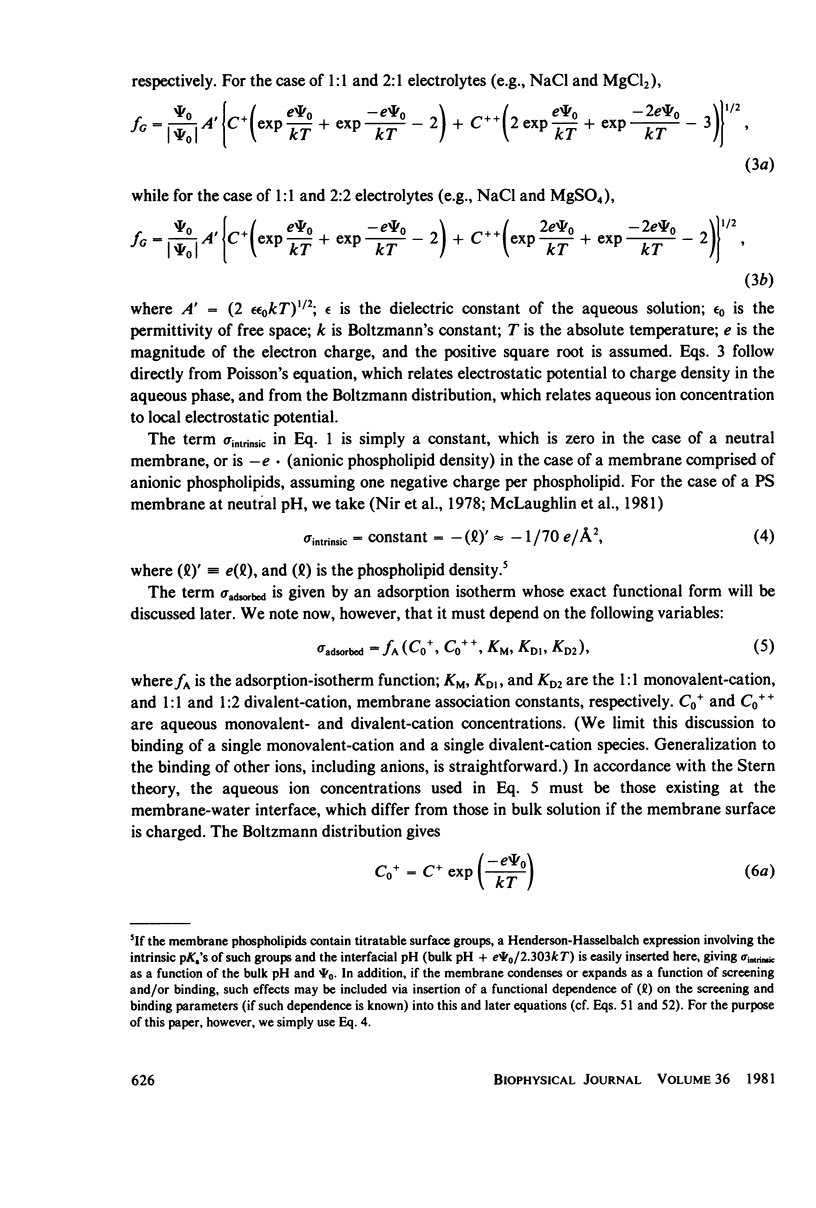
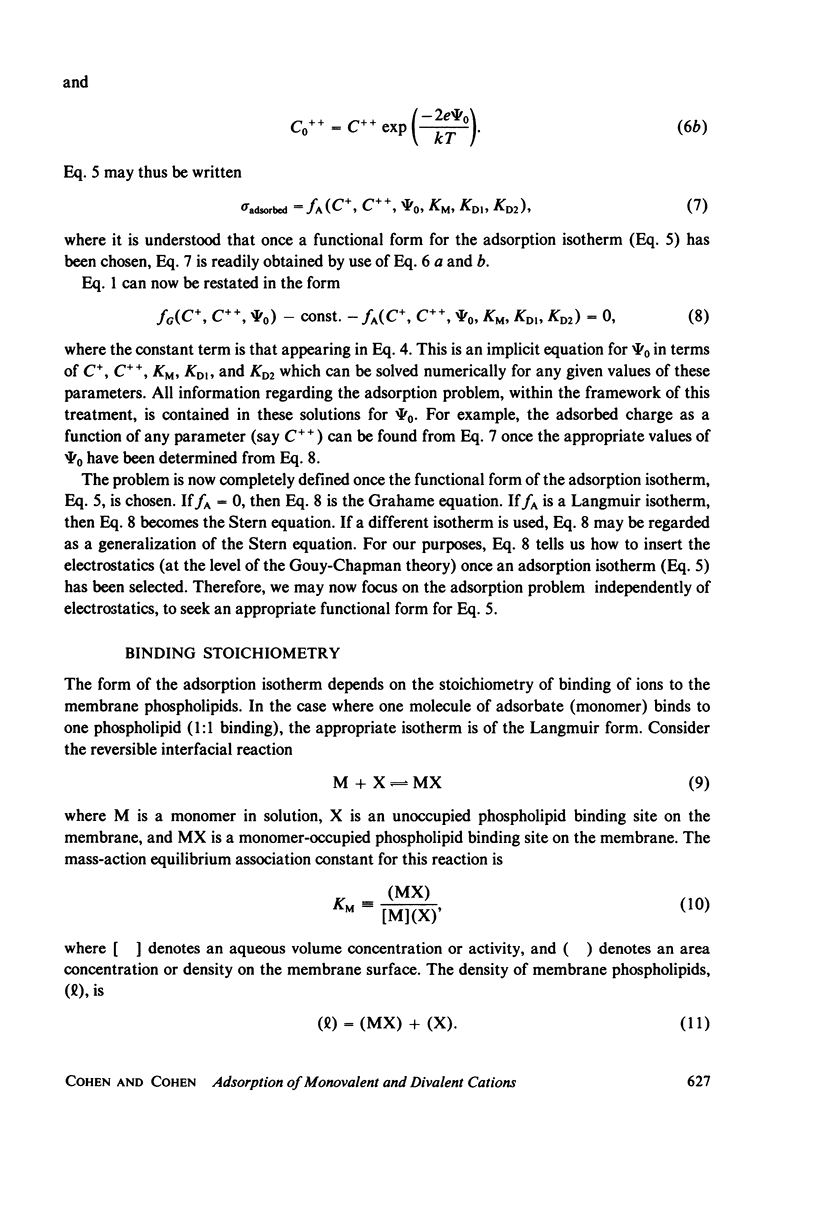


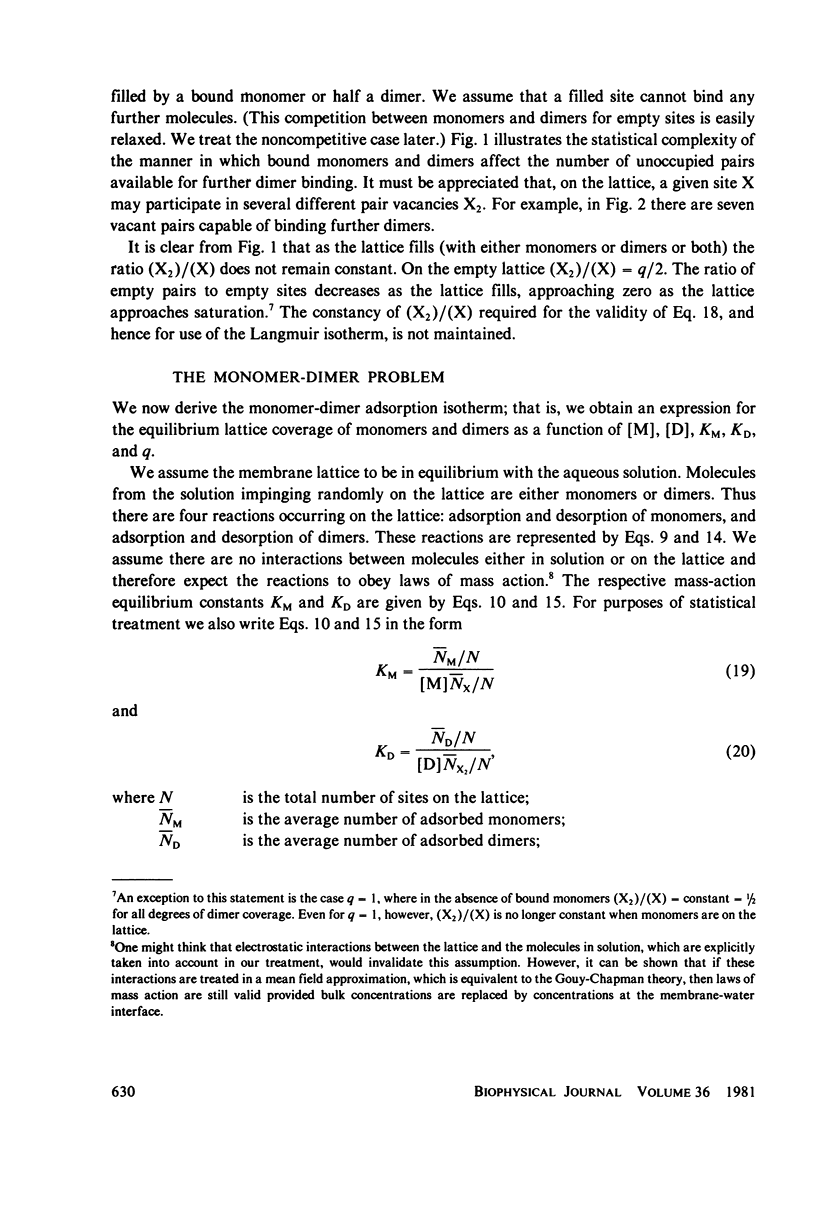

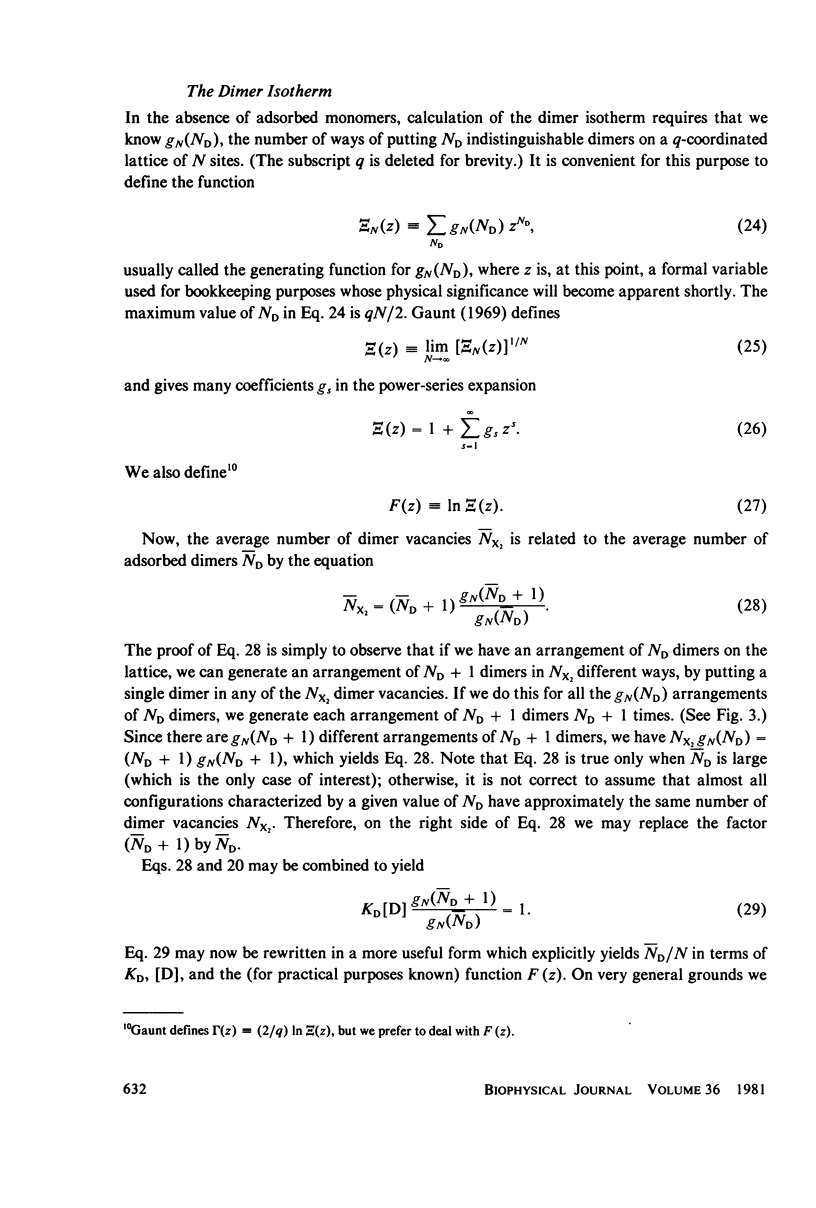
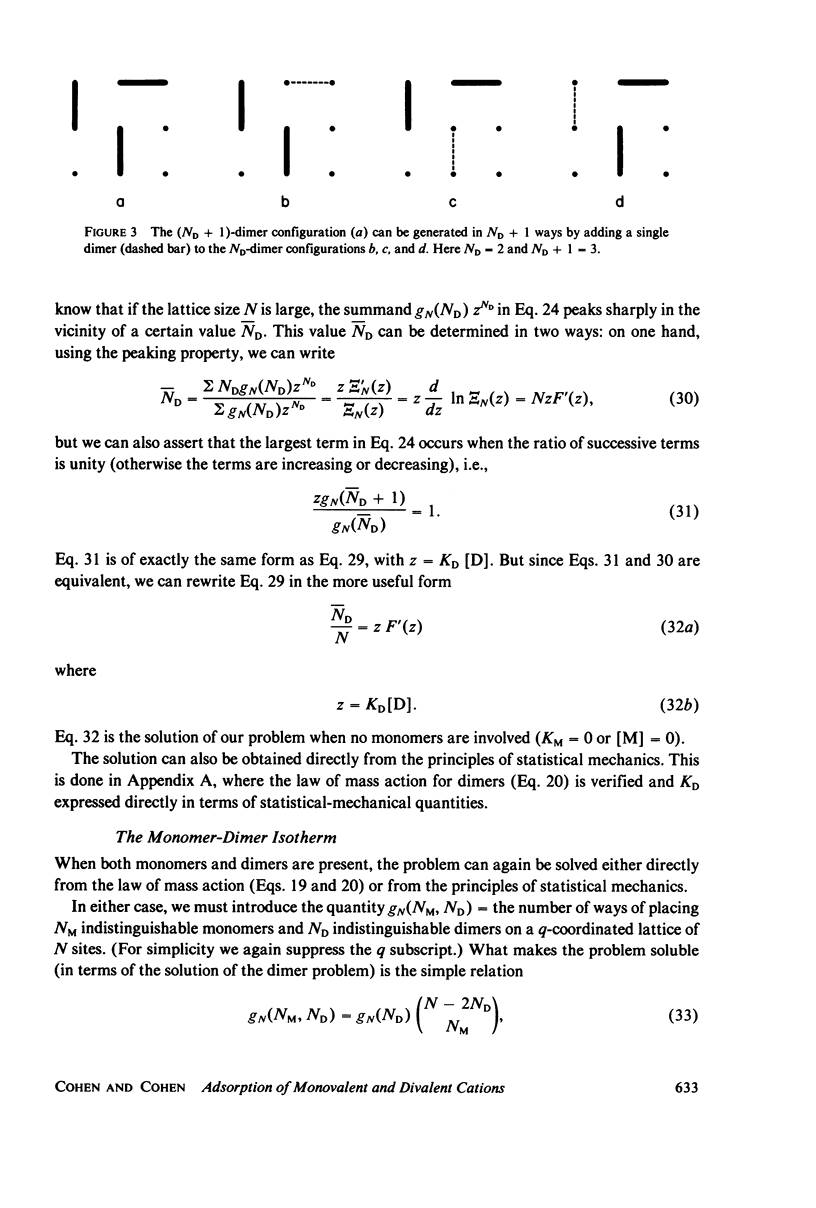
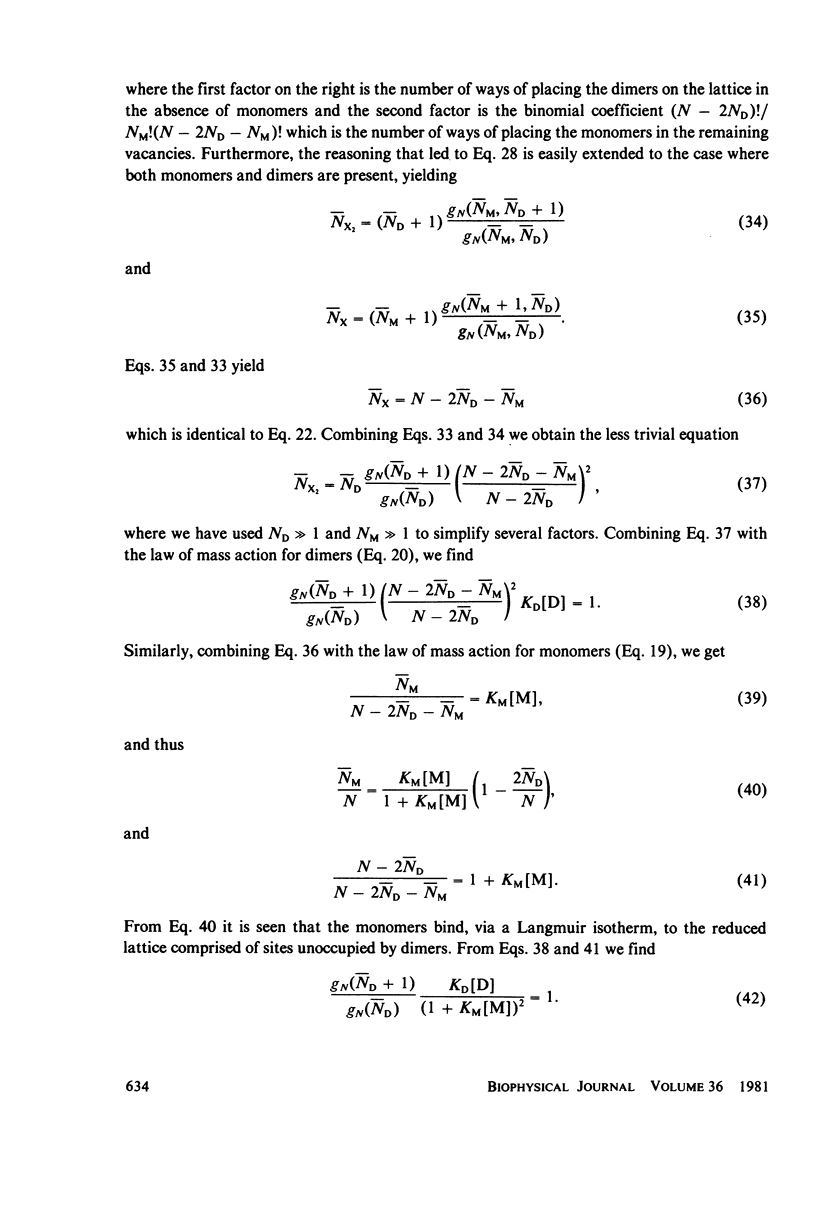

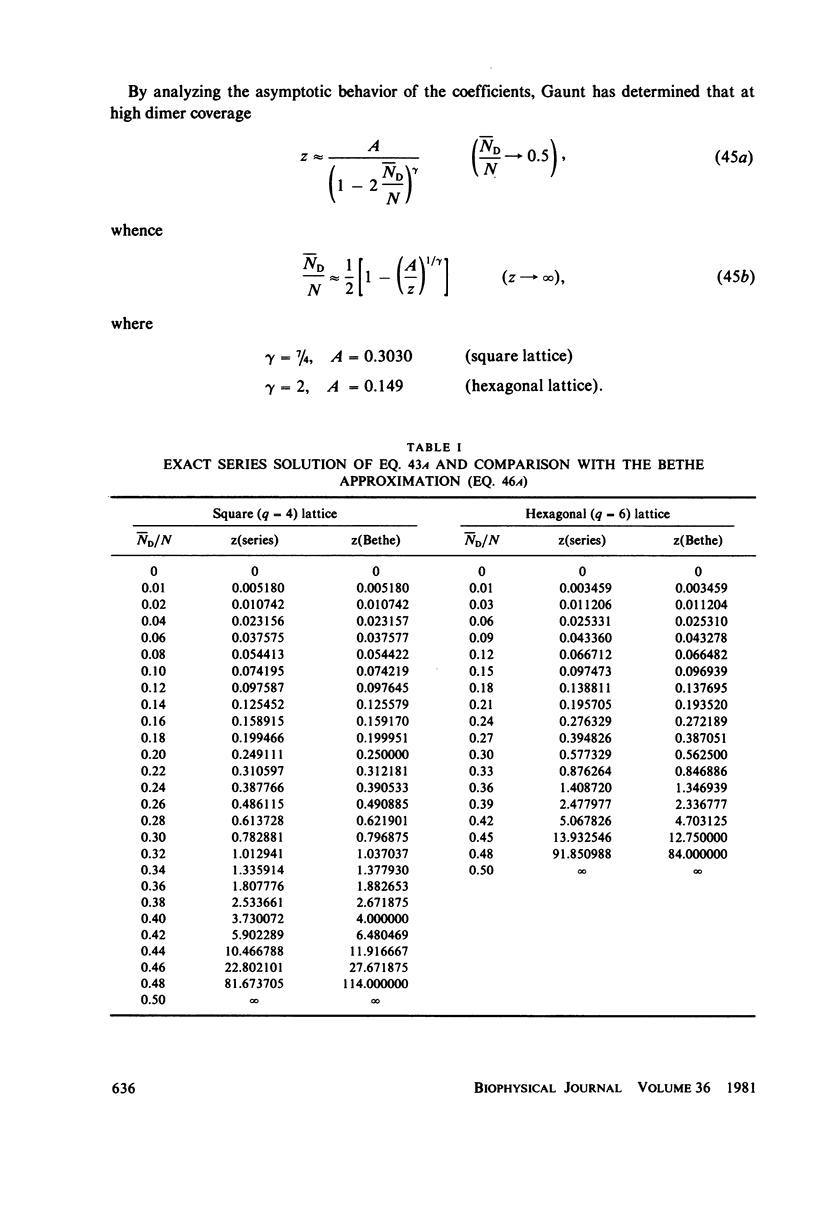

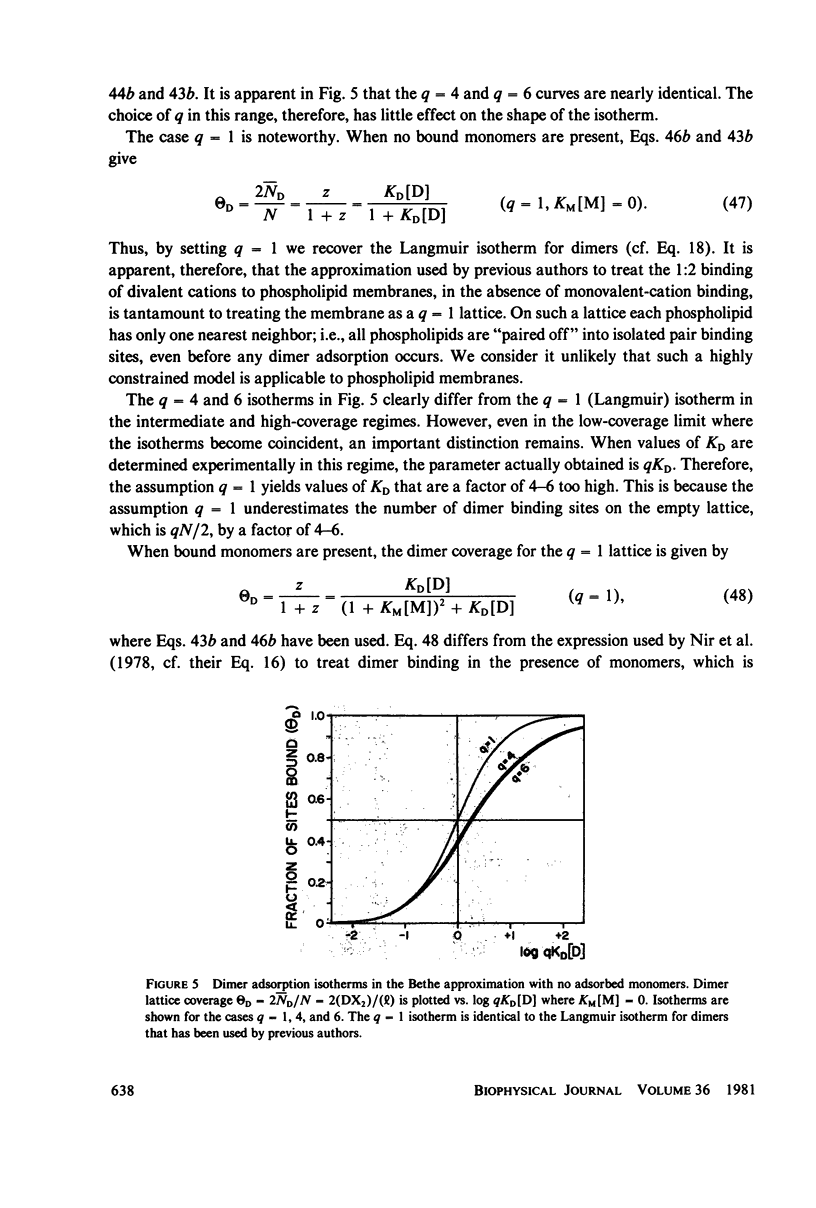
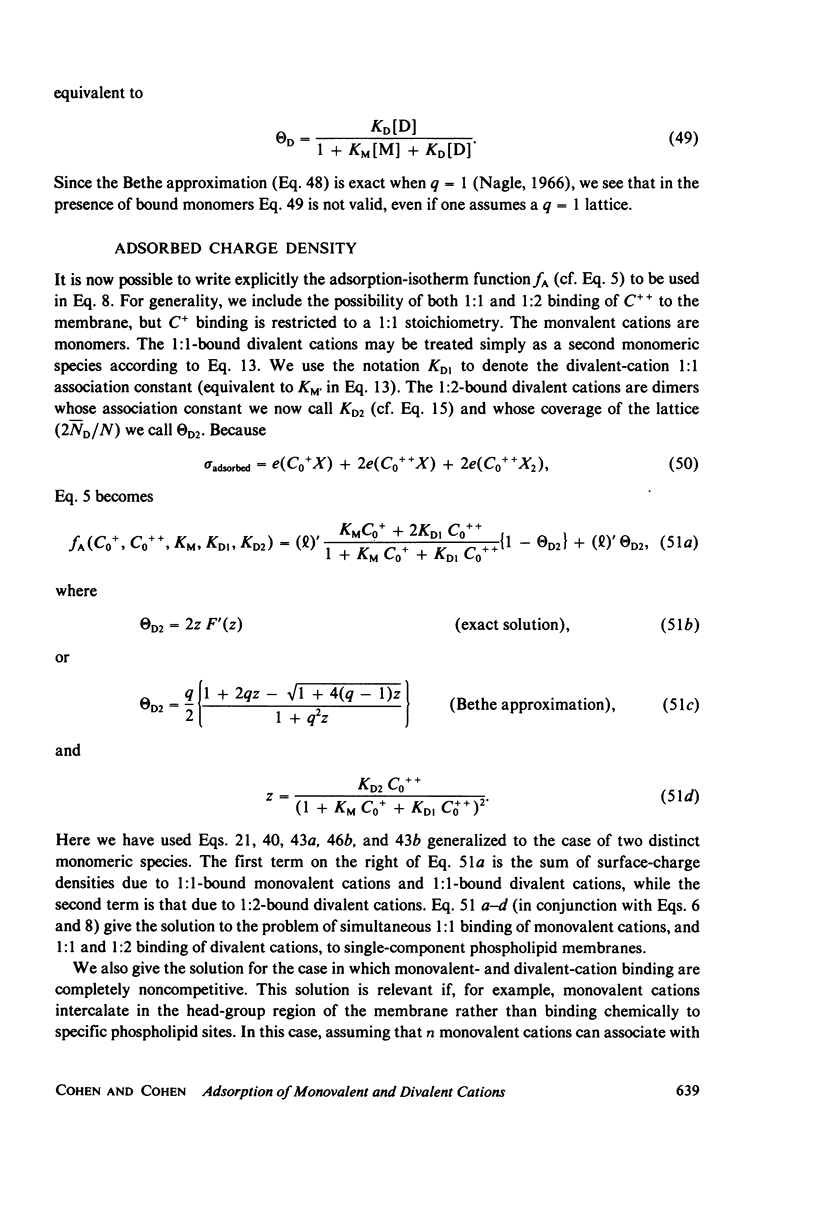

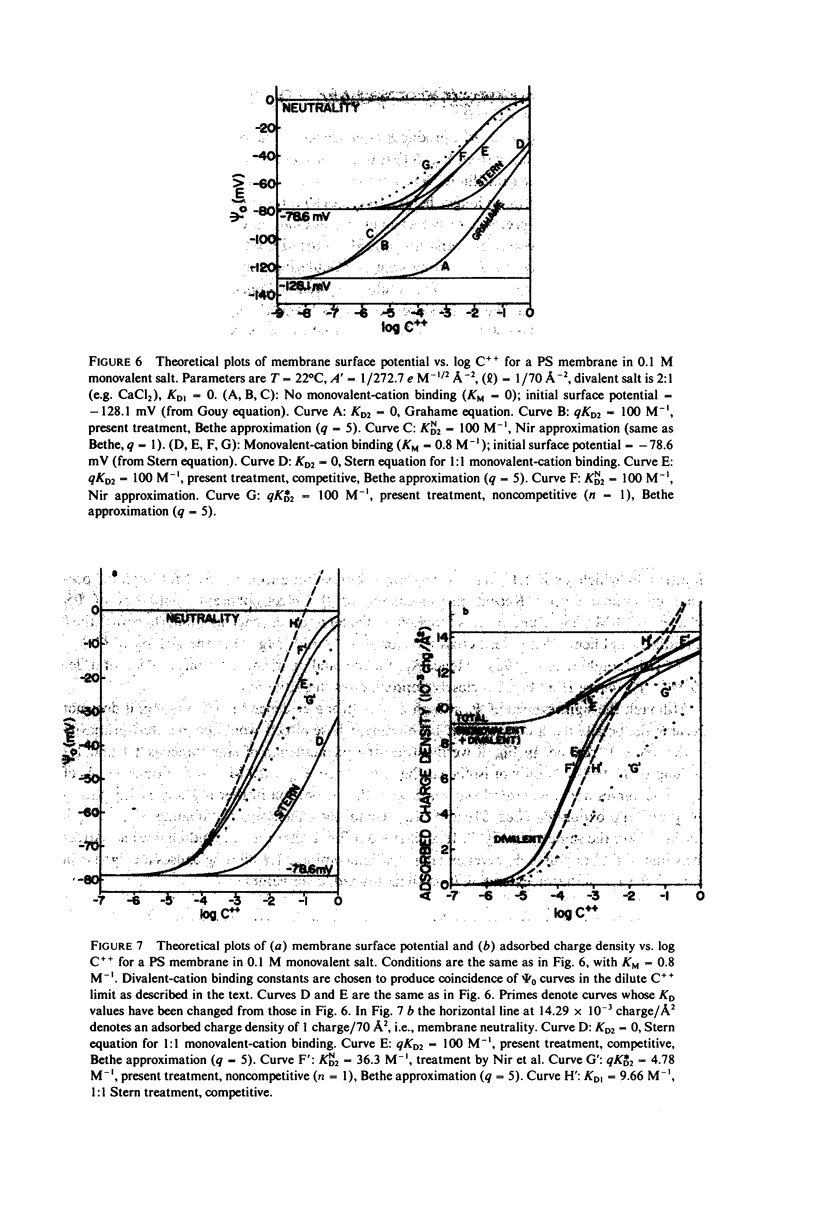
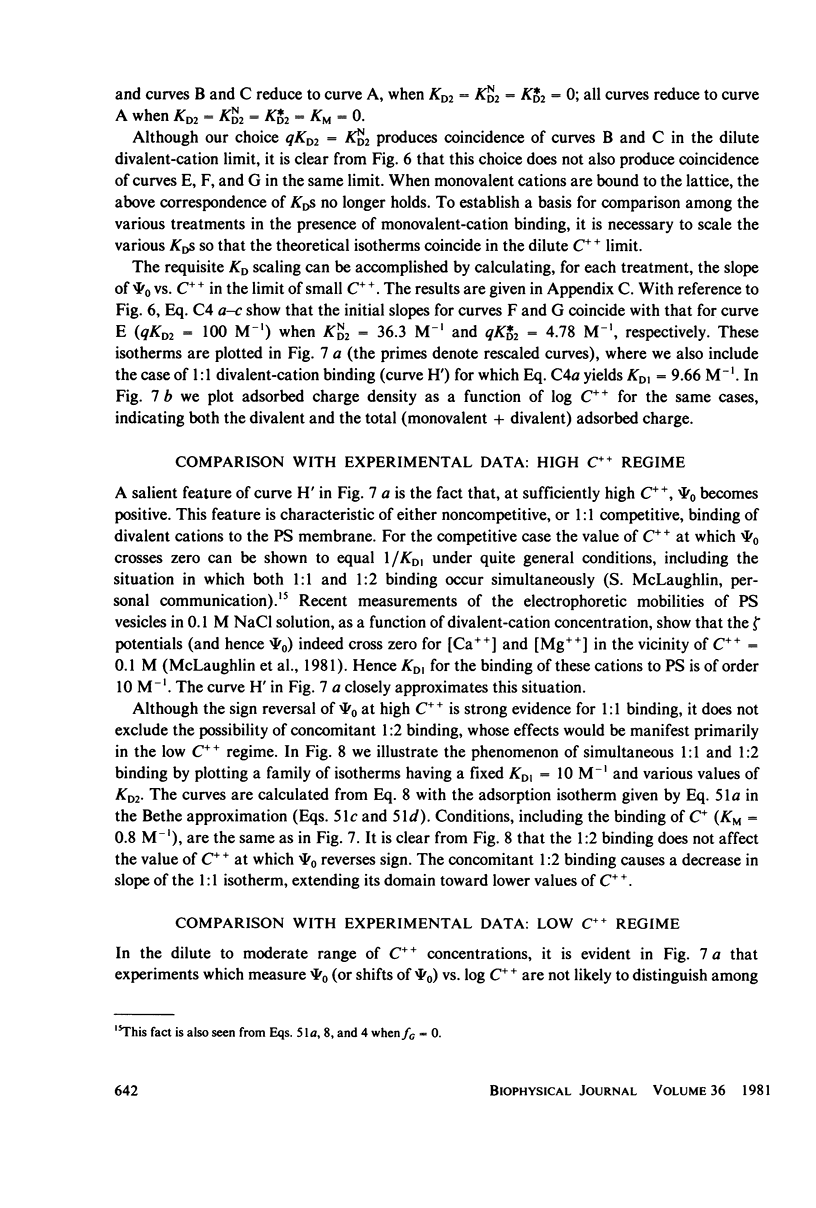
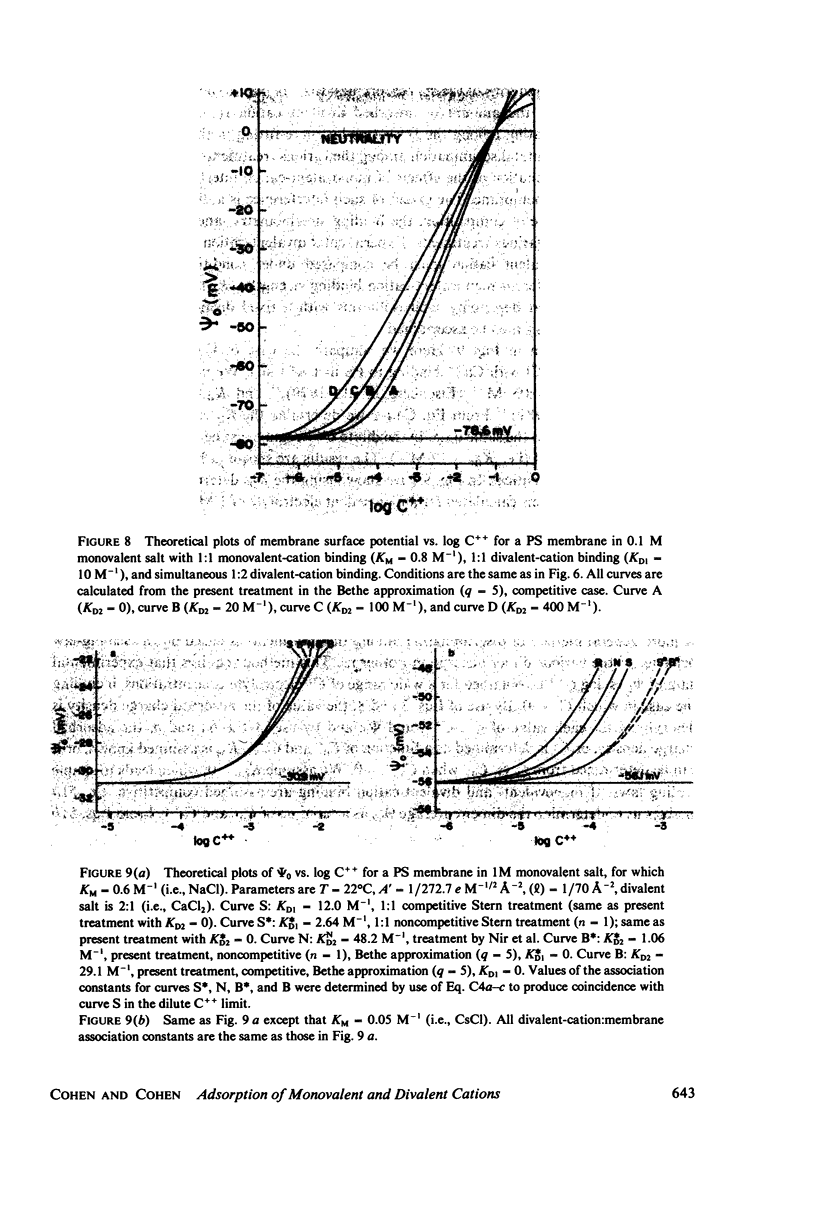


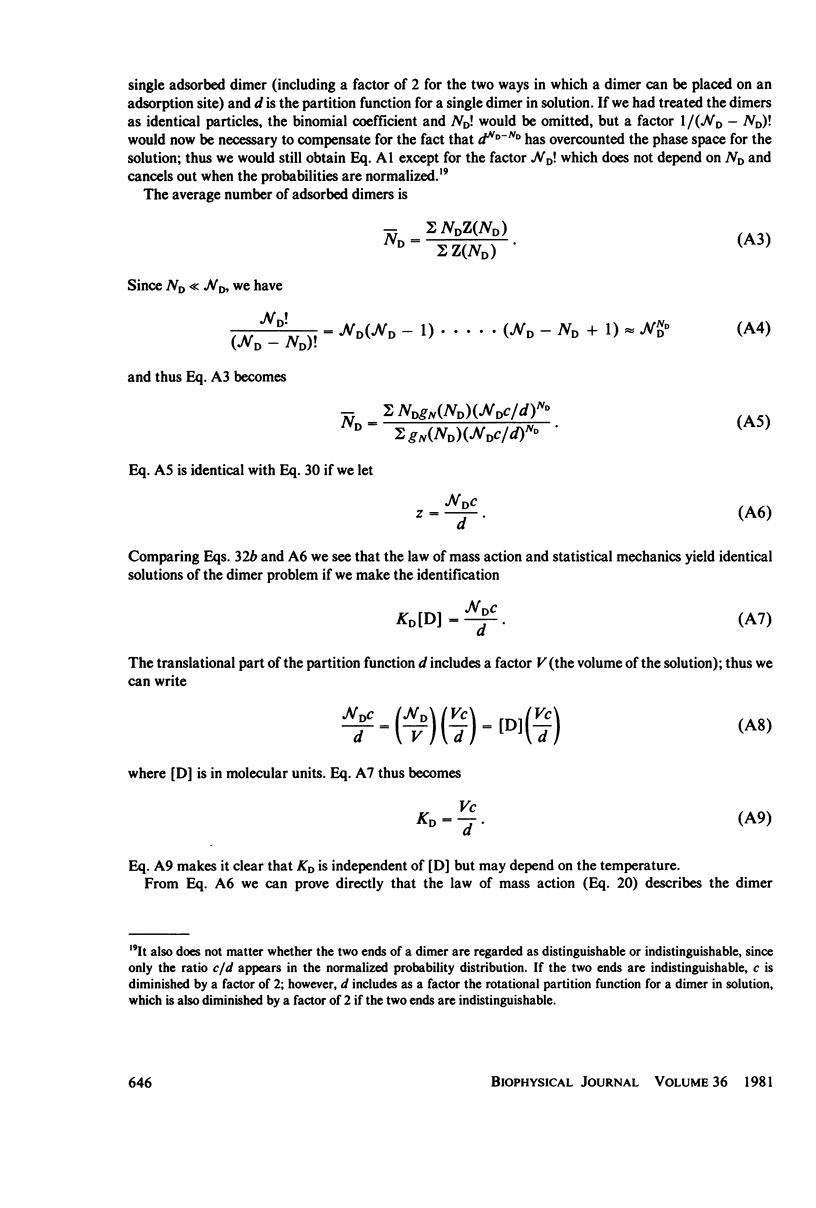
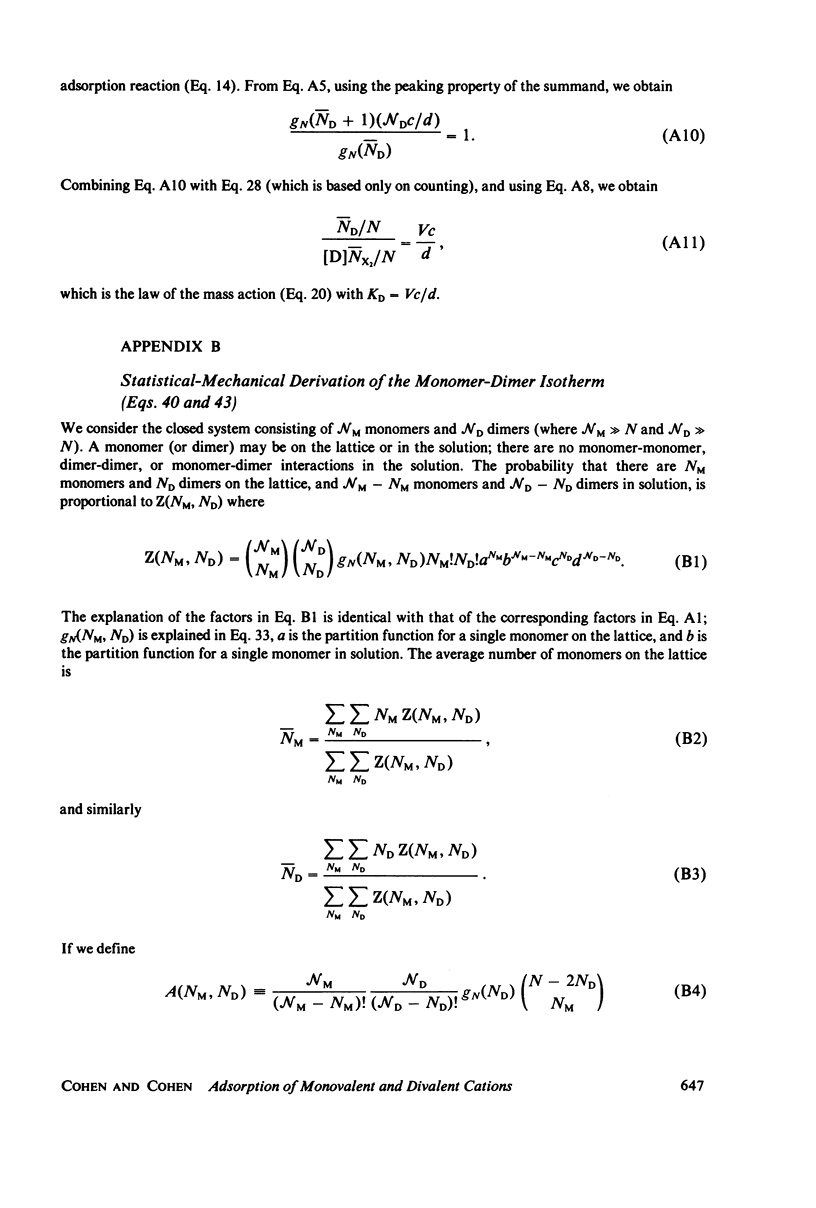
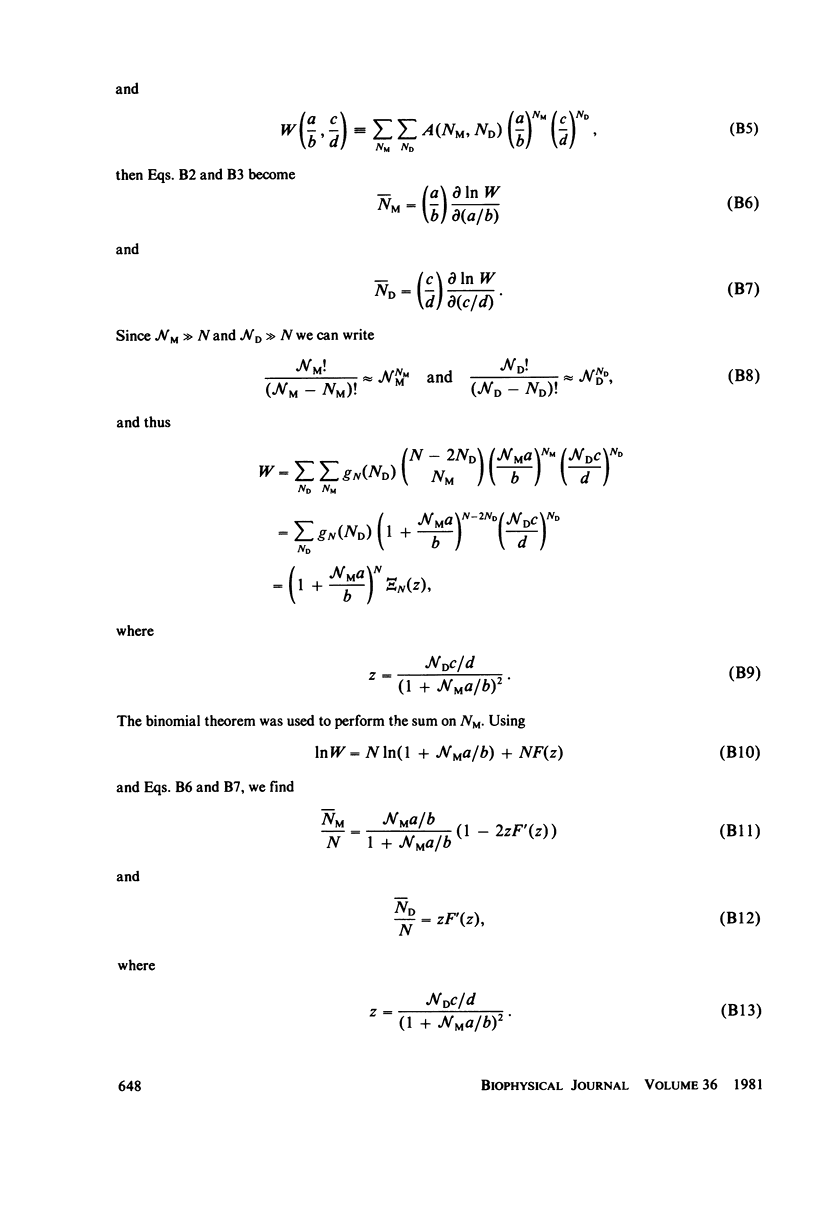


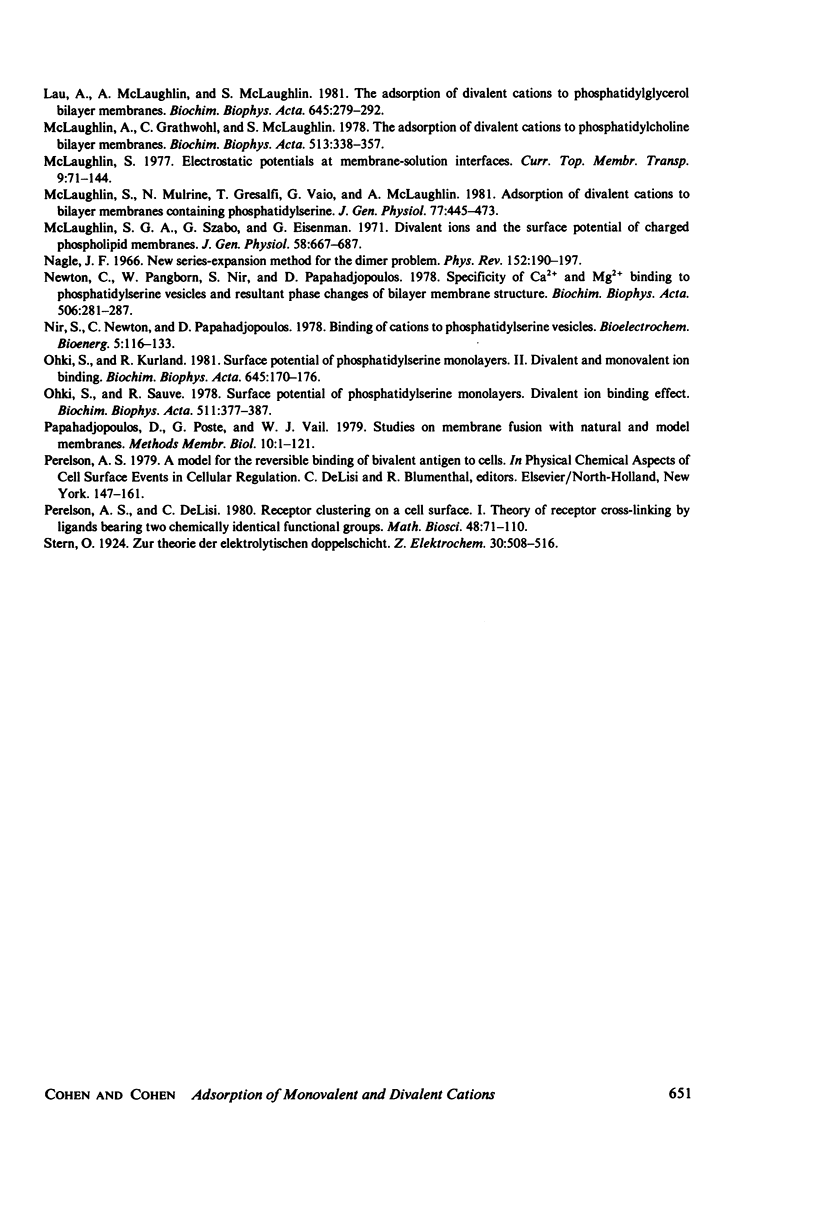
Selected References
These references are in PubMed. This may not be the complete list of references from this article.
- Bentz J., Nir S. Cation binding to membranes: competition between mono-, di- and trivalent cations. Bull Math Biol. 1980;42(2):191–220. doi: 10.1007/BF02464638. [DOI] [PubMed] [Google Scholar]
- Dembo M., Goldstein B. Theory of equilibrium binding of symmetric bivalent haptens to cell surface antibody: application to histamine release from basophils. J Immunol. 1978 Jul;121(1):345–353. [PubMed] [Google Scholar]
- Eisenberg M., Gresalfi T., Riccio T., McLaughlin S. Adsorption of monovalent cations to bilayer membranes containing negative phospholipids. Biochemistry. 1979 Nov 13;18(23):5213–5223. doi: 10.1021/bi00590a028. [DOI] [PubMed] [Google Scholar]
- GRAHAME D. C. The electrical double layer and the theory of electrocapillarity. Chem Rev. 1947 Dec;41(3):441–501. doi: 10.1021/cr60130a002. [DOI] [PubMed] [Google Scholar]
- Kolber M. A., van Breemen C. Competitive membrane adsorption of Na+, K+, and Ca2+ in smooth muscle cells. J Membr Biol. 1981 Feb 15;58(2):115–121. doi: 10.1007/BF01870974. [DOI] [PubMed] [Google Scholar]
- Kurland R., Newton C., Nir S., Papahadjopoulos D. Specificity of Na+ binding to phosphatidylserine vesicles from a 23Na NMR relaxation rate study. Biochim Biophys Acta. 1979 Feb 20;551(1):137–147. doi: 10.1016/0005-2736(79)90360-2. [DOI] [PubMed] [Google Scholar]
- Lau A., McLaughlin A., McLaughlin S. The adsorption of divalent cations to phosphatidylglycerol bilayer membranes. Biochim Biophys Acta. 1981 Jul 20;645(2):279–292. doi: 10.1016/0005-2736(81)90199-1. [DOI] [PubMed] [Google Scholar]
- McLaughlin A., Grathwohl C., McLaughlin S. The adsorption of divalent cations to phosphatidylcholine bilayer membranes. Biochim Biophys Acta. 1978 Nov 16;513(3):338–357. doi: 10.1016/0005-2736(78)90203-1. [DOI] [PubMed] [Google Scholar]
- McLaughlin S. G., Szabo G., Eisenman G. Divalent ions and the surface potential of charged phospholipid membranes. J Gen Physiol. 1971 Dec;58(6):667–687. doi: 10.1085/jgp.58.6.667. [DOI] [PMC free article] [PubMed] [Google Scholar]
- McLaughlin S., Mulrine N., Gresalfi T., Vaio G., McLaughlin A. Adsorption of divalent cations to bilayer membranes containing phosphatidylserine. J Gen Physiol. 1981 Apr;77(4):445–473. doi: 10.1085/jgp.77.4.445. [DOI] [PMC free article] [PubMed] [Google Scholar]
- Newton C., Pangborn W., Nir S., Papahadjopoulos D. Specificity of Ca2+ and Mg2+ binding to phosphatidylserine vesicles and resultant phase changes of bilayer membrane structure. Biochim Biophys Acta. 1978 Jan 19;506(2):281–287. doi: 10.1016/0005-2736(78)90398-x. [DOI] [PubMed] [Google Scholar]
- Ohki S., Kurland R. Surface potential of phosphatidylserine monolayers. II. Divalent and monovalent ion binding. Biochim Biophys Acta. 1981 Jul 20;645(2):170–176. doi: 10.1016/0005-2736(81)90187-5. [DOI] [PubMed] [Google Scholar]
- Ohki S., Sauve R. Surface potential of phosphatidylserine monolayers. I. Divalent ion binding effect. Biochim Biophys Acta. 1978 Aug 17;511(3):377–387. doi: 10.1016/0005-2736(78)90274-2. [DOI] [PubMed] [Google Scholar]


